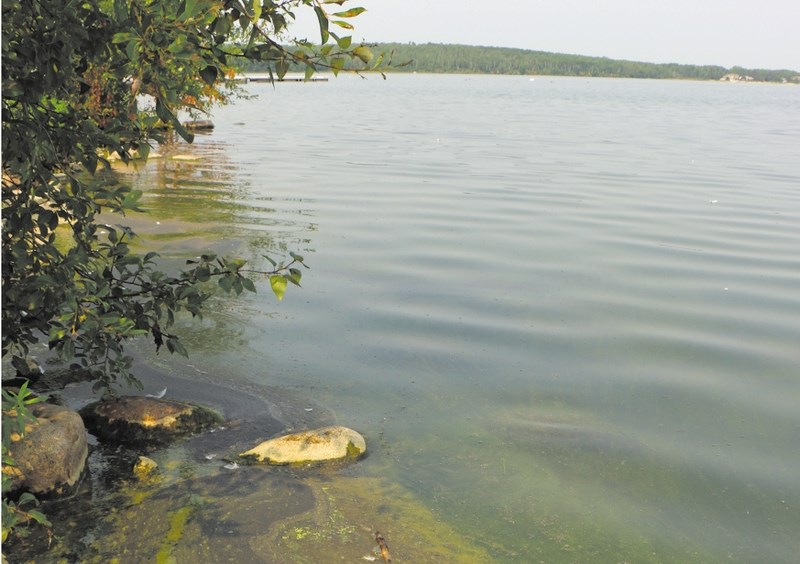Residents around Moose Lake have nothing to worry about according to Bradley Peter of the Alberta Lake Management Society (ALMS), who says the water quality of the local lake is fine.
“I think that Moose Lake, in terms of its water quality history, is probably on track to be a eutrophic lake like it should be,” said Bradley. “Moose Lake is naturally green, so we have to expect for some greenness. I don't necessarily think it is a bad thing to have algae blooms.”
Many residents who attended the Moose Lake AGM on Feb. 2 in Bonnyville were concerned over the increasing and consistent blue-green algae blooms the lake has seen over the past few years.
The thick, soupy algae that has been appearing on lakes throughout the Beaver River Watershed produces toxins that can cause a wide range of health effects in humans and animals that come into contact with it. The algae has halted water activities at Moose Lake over the past few summers.
According to Bradley, a variety of factors could be causing the blue-green algae to appear in the lake, such as high levels of nutrients and higher-than-normal surface water temperatures.
“In the past decade we have had the highest surface water temperatures ever recorded in Alberta,” explained Bradley.
Surface temperatures on Moose Lake were recorded as high as 23 degrees Celsius last year, compared to the 17-degree readings recorded at the bottom of the lake.
Moose Lake also saw a spike in phosphorus levels in 2013 and 2014, which could be another contributing factor to the algae. With so many factors creating the toxic blooms it is tough to pinpoint the exact cause.
In order to get a better idea of the state of the local watershed, members of the Beaver River Watershed Alliance (BRWA) conducted a study of all the tributaries in 2014.
Tributaries such as Moose River, Valerie Creek and Yelling Creek were among the many rivers and streams tested over the course of the summer months.
The testing was backed by $18,000 in funding from the Environment and Sustainable Resource Development (ESRD).
In order to keep collecting data for lakes all across the province the ALMS has set up a lake-monitoring program called Lake Watch.
“Lake Watch involves partnering a ALMS staff member with a resident and a lake,” said Peter. “The resident at the lake is the volunteer and they require a boat. They take our technician out on the lake five times over the course of the summer, or we can have five people share the work and each take our technician out one time during the summer.”
With ALMS not having an abundance of funds, the society doesn't own any boats and relies on the help of volunteers to be able to collect lake data.
“If you were to just rely on the government to collect data you wouldn't get much, because it is underfunded,” said Peter.
Peter did his best to try and entice those at the meeting to volunteer and offer their boat and services for a few hours in the summer, saying volunteers are what make the program and data collection possible.
“The best way for us to get out on all of these different lakes is really the volunteers. It is really what makes this program possible,” said Peter.
“The Beaver River Watershed has some of the best and longest term data in Alberta. It is an active watershed group and we will come out to the lakes because we know the data is valued.”



